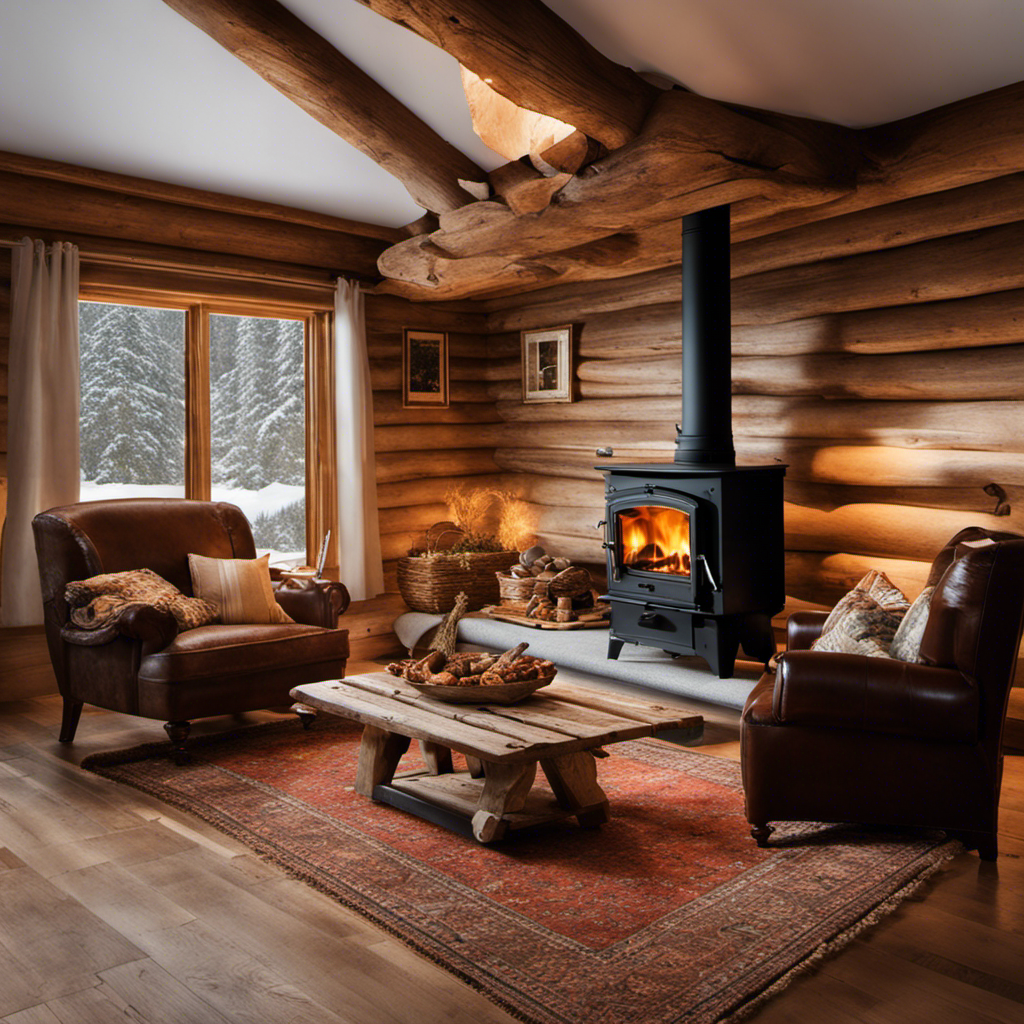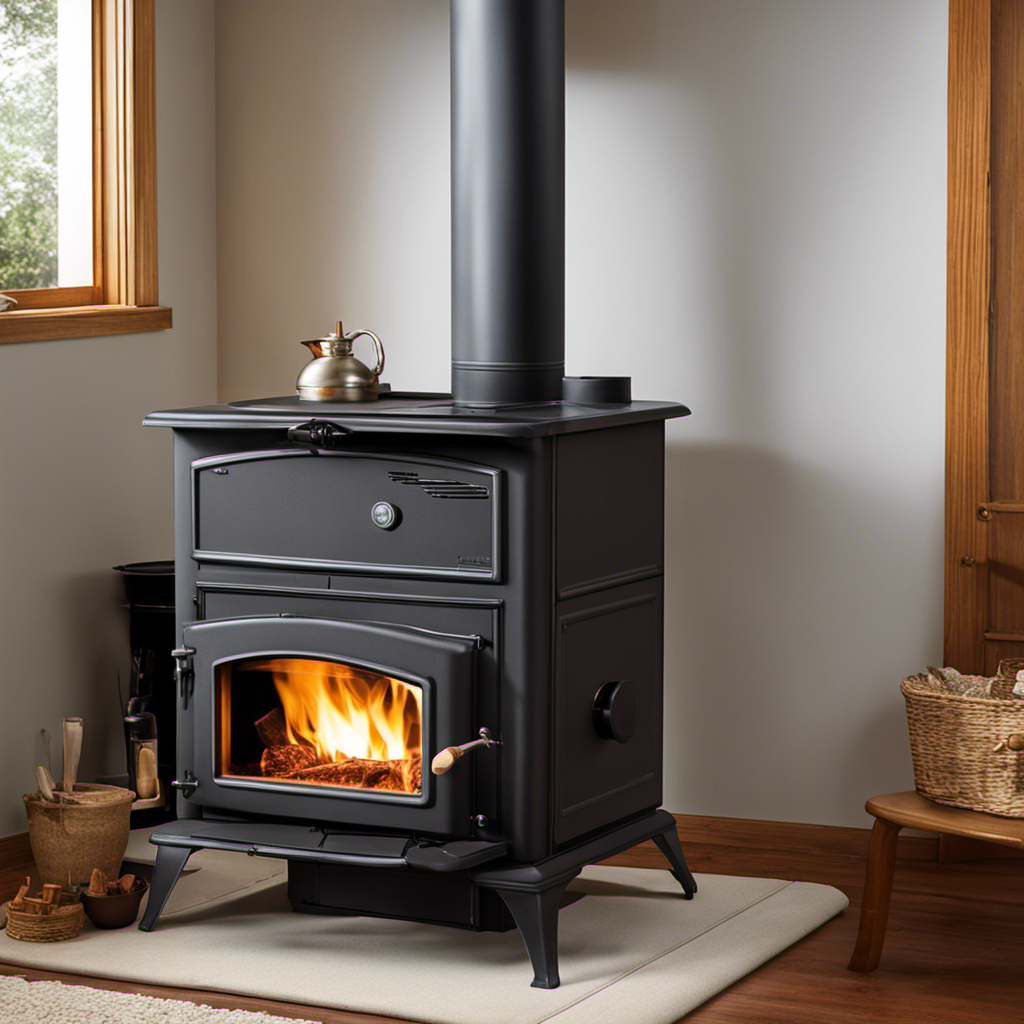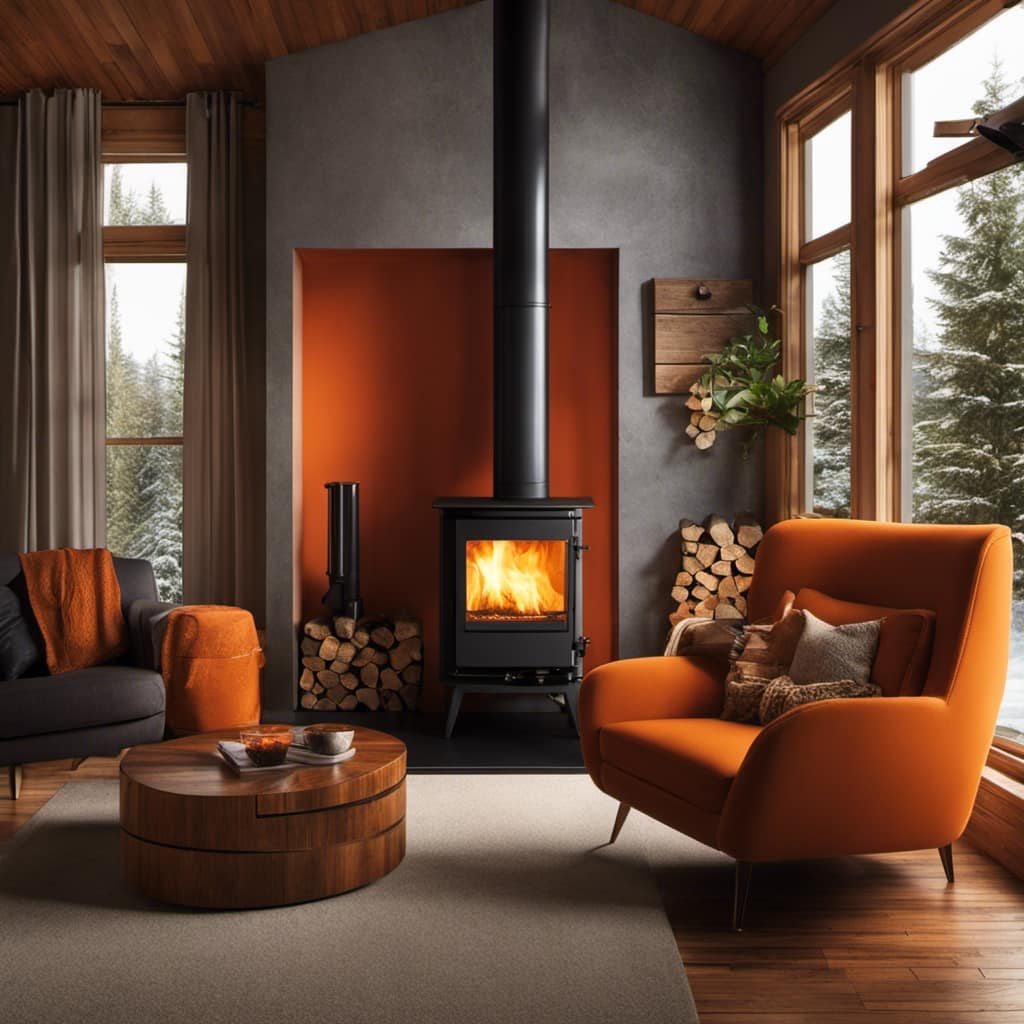As a person familiar with using wood stoves, I understand the importance of correctly using the damper. Knowing the right time to close the dampers is crucial for maintaining a safe and efficient fire. Whether you are experienced with wood burning or just starting out, mastering damper control is vital for a comfortable and warm winter.
In this article, I’ll share the factors to consider, as well as helpful tips for safely adjusting the dampers.
Key Takeaways
- Proper damper usage is important for cost-effective heating and a cozy ambiance.
- Closing dampers too much restricts airflow, leading to incomplete combustion and poor air quality.
- Partially closing dampers maintains a consistent and efficient burn, maximizing heat output and extending burn time.
- After a burn time of at least 8 hours, fully closing dampers is safe and efficient, helping retain heat and conserve firewood.
The Importance of Proper Damper Usage
I know I need to pay attention to the importance of properly using dampers in order to prevent potential hazards.
When it comes to using a wood stove, understanding the benefits and proper ventilation is crucial. Wood stoves provide numerous advantages, such as cost-effectiveness, as wood is often more affordable than other heating options. Additionally, wood stoves offer a cozy and comforting ambiance.
However, without proper ventilation, wood stoves can pose risks. Ventilation ensures that harmful gases, such as carbon monoxide, are safely expelled from the house. This is where dampers come into play. By adjusting the dampers, you can control the airflow and prevent the buildup of dangerous gases.
It’s important to consider several factors before closing the dampers completely, as this can lead to inadequate combustion and poor air quality.
Factors to Consider Before Closing the Dampers
Before closing the dampers completely, it’s important to consider the impact on combustion and air quality in order to make an informed decision. Factors to consider include:
-
Combustion Efficiency: Closing the dampers too much can restrict the airflow, leading to incomplete combustion and the production of harmful byproducts like carbon monoxide. It’s crucial to maintain proper airflow for efficient burning of the wood.
-
Safety Precautions: Closing the dampers completely can increase the risk of a buildup of creosote, a highly flammable substance that can lead to chimney fires. It’s important to strike a balance between reducing heat loss and ensuring adequate ventilation to minimize this risk.
-
Indoor Air Quality: Closing the dampers too much can result in poor indoor air quality due to the accumulation of smoke, gases, and pollutants. This can be harmful to your health, particularly for those with respiratory conditions.
Considering these factors, it’s important to find the right balance when closing the dampers to ensure both safety and optimal performance of your wood stove.
When to Partially Close the Dampers
While it may seem counterintuitive, partially closing the dampers can actually help maintain a more consistent and efficient burn in your wood stove. When the dampers are fully open, a large amount of air rushes in, causing the fire to burn hot and fast. This can lead to wasted fuel and a shorter burn time.
By partially closing the dampers, you can control the airflow and create a more controlled burn. This allows for a slower, more efficient burn, which maximizes heat output and extends the burn time of your wood.
Additionally, partially closing the dampers can prevent excessive heat loss through the chimney. To achieve optimal damper adjustment, start by opening the dampers fully to start the fire, then gradually close them until you reach the desired burn rate and heat output.
However, there will come a time when fully closing the dampers is necessary.
When to Fully Close the Dampers
After reaching a burn time of at least 8 hours, it’s safe and efficient to fully close the dampers on a wood stove. This is because by this time, the firewood has burned down to embers and the stove has reached its optimal operating temperature.
Here are three reasons why fully closing the dampers at this point is beneficial:
-
Optimal ventilation for wood stove: Closing the dampers helps regulate the airflow inside the stove, ensuring proper combustion and preventing excessive heat loss. This allows for a more efficient and controlled burn.
-
Managing heat output efficiently: Fully closing the dampers helps retain the heat generated by the burning embers, allowing it to radiate into the room for a longer period of time. This helps maintain a comfortable temperature and reduces the need for additional fuel.
-
Conserving firewood: By fully closing the dampers, you can slow down the rate at which the remaining firewood burns, extending the burn time and maximizing the use of available fuel.
Tips for Safely Closing and Adjusting the Dampers
During my experience with wood stoves, I’ve learned that one tip for safely closing and adjusting the dampers is to use heat-resistant gloves to protect your hands from the hot surfaces. This is especially important as the dampers can become extremely hot and can cause burns if touched directly. In addition to using gloves, there are other damper maintenance techniques that can help ensure the safe and efficient operation of your wood stove. One common mistake to avoid is closing the dampers too early, as this can lead to a buildup of smoke and soot inside the stove. Another mistake is leaving the dampers open for too long, which can result in excessive heat loss and inefficient burning of the wood. By understanding these tips and avoiding common mistakes, you can maximize the performance and safety of your wood stove.
| Damper Maintenance Techniques | Common Damper Mistakes to Avoid |
|---|---|
| Clean the dampers regularly | Closing dampers too early |
| Check for any signs of damage or wear | Leaving dampers open for too long |
| Lubricate the dampers if necessary | Neglecting to adjust dampers as needed |
| Ensure proper positioning of the dampers | Overlooking the importance of damper maintenance |
Frequently Asked Questions
Can I Leave the Dampers Fully Open All the Time?
I wouldn’t recommend leaving the dampers fully open all the time. There are pros and cons to consider. Optimal damper settings are crucial for efficient burning, so it’s important to find the right balance.
Is It Necessary to Close the Dampers at Night?
At night, it’s important to close the dampers on a wood stove to control the fire and prevent it from dying out. However, closing them too early can lead to smoke entering the room. Regularly checking and adjusting dampers is crucial.
Can Closing the Dampers Too Early Cause the Fire to Go Out?
Closing the dampers too early can indeed cause the fire to go out. It is important to maintain a proper airflow to keep the fire burning efficiently and prevent it from dying out prematurely.
How Often Should I Check and Adjust the Dampers?
I check and adjust my wood stove dampers regularly to ensure optimal performance. It’s important to find the right balance between air flow and heat retention. By doing so, I can enjoy a cozy fire for hours without worrying about it going out.
Can Closing the Dampers Too Quickly Cause Smoke to Enter the Room?
Closing the dampers too quickly can indeed cause smoke to enter the room. To prevent smoke backdraft, it is recommended to wait until the fire has died down and the smoke has cleared before closing the dampers.
Conclusion
In conclusion, knowing when to close the dampers on a wood stove is vital for both safety and efficiency. By considering factors such as outside temperature, fire intensity, and ventilation needs, you can determine whether to partially or fully close the dampers. Remember to always prioritize safety and follow manufacturer guidelines.
Closing the dampers is like sealing a warm hug, ensuring that your wood stove operates effectively and provides a cozy atmosphere for you and your loved ones.











